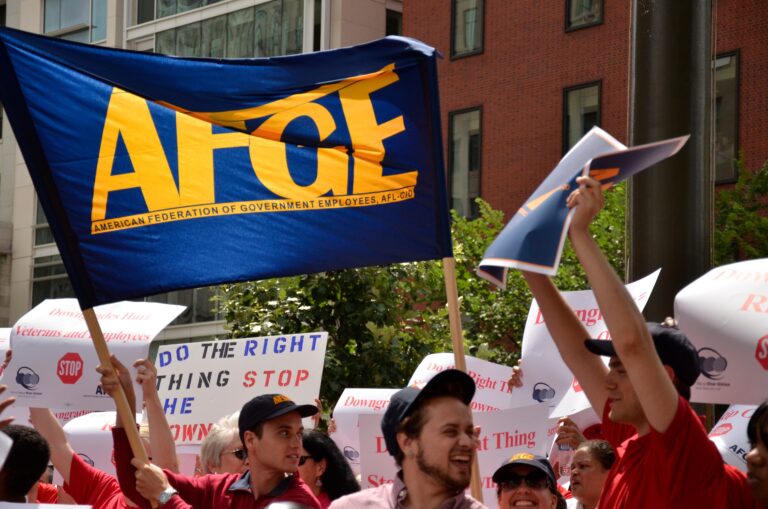
Fred Messner is a student at Harvard Law School.
Monday morning featured dueling perspectives on the impact of decisions by Republican-led states to end federally mandated unemployment benefits before their statutory expiration. The New York Times reported that the cessation of benefits in Missouri, a policy championed by Governor Mike Parson, had generated “virtually no uptick in applicants” to state workforce development programs. And more generally, the Times reported, the job search website Indeed failed to identify any increase in application activity in states that have rejected the $300 weekly federal benefits supplement. To the contrary, Indeed found that clicks on job postings were below the national average in states that ended benefits. The Wall Street Journal told a different story. According to the Journal, “Americans are leaving unemployment rolls more quickly in states cutting off benefits.” Citing an analysis by economists at Jeffries LLC, a New York-based investment bank, the Journal noted that the number of workers receiving benefits through regular state programs fell almost 14% between mid-May and mid-June in states ending benefits—a significantly more rapid decline than the 10% decrease in states that maintained the federal enhancement. Underneath this empirical question—whether benefits cuts do in fact drive individuals back into the labor market—is the more crucial normative question: whether state governments should be adopting precarity-generating policies in order to increase workers’ willingness to accept less desirable work than they otherwise would. As one re-entrant put it, “It’s not that I don’t want to go back to work. . . . [It’s that] if I took a minimum wage job, I’d be working for health insurance and child care and have nothing less to live on.”
Elsewhere, the American Prospect sat down with Randy Korgan, a long time organizer for the International Brotherhood of Teamsters and leader of the union’s “Amazon Project,” which Mackenzie reviewed last week. Korgan emphasized the urgency of organizing the workforce of a company with a demonstrable track record of exerting downward pressure on wages and working conditions. As Korgan explained, a UPS driver in Southern California made $20.50 per hour in 1996, significantly more (even before adjusting for inflation) than the $16 an Amazon driver currently makes in the same market. While Korgan, perhaps understandably, shared little about the Teamsters’ tactical plans, he clarified that the union did not intend to rely solely on NLRB-managed elections to organize the company’s workers. “The NLRB strategy is only one of many ways to seek recognition,” he explained, and “workers have the ability to conduct concerted activities with or without a union representing them.”
The Teamsters’ efforts gain additional urgency with each new revelation of Amazon’s draconian labor practices. Adding to this body of journalism, Bloomberg Law reported Monday on the company’s machine-managed human-resources operations. According to the outlet, Amazon’s “Flex” drivers—an “army” of contract drivers employed in gig-like structures—are managed from day one by algorithms that “monitor[] their every move.” With little human feedback, drivers are guided only by algorithmically generated ratings that sort their performance into four categories: “Fantastic,” “Great,” “Fair,” or “At Risk.” This style of anonymous performance management can be opaque and degrading even at its best, but its most significant abuses appear when workers are terminated on the basis of purely quantitative metrics that workers have little ability to audit and even less recourse to challenge. As one driver explained, “[i]t’s you against the machine, so you don’t even try.” Stories like these reemphasize that, while wages and job security may be the employment terms most salient to the broader public, the company’s substandard labor practices run far deeper, and collective bargaining efforts will need to address a truly vast range of policies touching every aspect of the employment relationship.
Finally, the Biden Administration continues to explore ways to leverage the federal government’s mammoth purchasing power to promote labor rights. One nascent initiative under consideration is to “update and strengthen” an Obama-era order that encouraged federal agencies to require project labor agreements (PLAs) when awarding contracts of $25 million or more. These PLAs would require contractors to commit, pre-award, to entering a collective bargaining agreement with at least one union to solidify employment terms for the length of the contact. Separately, the Administration’s labor task force continues to work towards an October 23rd deadline to issue final recommendations on pro-labor actions achievable through executive action. According to Bloomberg Law, talks have included “leveraging federal purchasing to steer agency contracts to companies with unionized labor or that otherwise promote workers’ rights.” Although these actions would not have the transformative impact of the PRO Act, labor leaders are increasingly viewing them as “legitimate, if incremental, means of helping unions gain membership and clout by tapping into underutilized executive branch authority.”






Daily News & Commentary
Start your day with our roundup of the latest labor developments. See all
December 8
Private payrolls fall; NYC Council overrides mayoral veto on pay data; workers sue Starbucks.
December 7
Philadelphia transit workers indicate that a strike is imminent; a federal judge temporarily blocks State Department layoffs; and Virginia lawmakers consider legislation to repeal the state’s “right to work” law.
December 5
Netflix set to acquire Warner Bros., Gen Z men are the most pro-union generation in history, and lawmakers introduce the “No Robot Bosses Act.”
December 4
Unionized journalists win arbitration concerning AI, Starbucks challenges two NLRB rulings in the Fifth Circuit, and Philadelphia transit workers resume contract negotiations.
December 3
The Trump administration seeks to appeal a federal judge’s order that protects the CBAs of employees within the federal workforce; the U.S. Department of Labor launches an initiative to investigate violations of the H-1B visa program; and a union files a petition to form a bargaining unit for employees at the Met.
December 2
Fourth Circuit rejects broad reading of NLRA’s managerial exception; OPM cancels reduced tuition program for federal employees; Starbucks will pay $39 million for violating New York City’s Fair Workweek law; Mamdani and Sanders join striking baristas outside a Brooklyn Starbucks.